Every ‘Planet of the Apes’ Movie, Ranked
- Oops!Something went wrong.Please try again later.
- Oops!Something went wrong.Please try again later.
- Oops!Something went wrong.Please try again later.
With “Kingdom of the Planet of the Apes” now in theaters, the 10th film in the beloved “Planet of the Apes” franchise that got its start way back in 1968 is finally here.
What began as an adaptation of Pierre Boulle’s sci-fi novel (known as “Monkey Planet” in England) has blossomed into one of the most beloved and constantly evolving franchises in the history of cinema. Every movie is unlike what came before it, tackling different social issues and pushing the technology of moviemaking further than where it was before.
One note: while we didn’t include it, we heartily recommend “Behind the Planet of the Apes,” a feature-length making-of documentary hosted by Roddy McDowall and directed by Kevin Burns and David Comtois. The documentary was produced in 1998 by AMC to commemorate the 30th anniversary of the original film and is full of gripping behind-the-scenes anecdotes an thoughtful analysis of the various movies’ cultural significance and social commentary. If you want to watch it, you can find it in the box sets released in 2001, 2008 and 2011. It’s very much worth tracking down, especially if you, like us, are an “Apes” fanatic.
10. “Planet of the Apes” (2001)
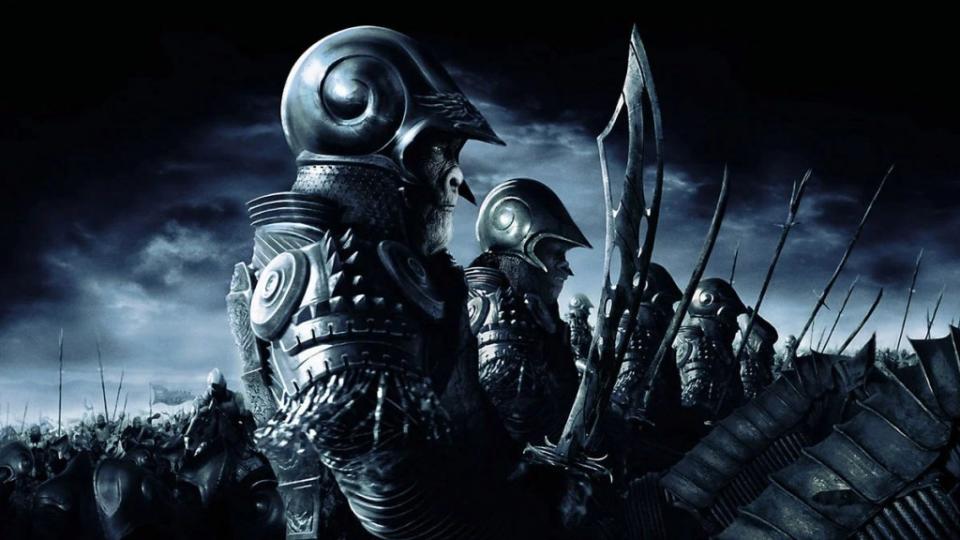
An attempt to get a new “Planet of the Apes” movie off the ground began, in earnest, in the late 1980s with a variety of filmmakers pitching Fox on their take, including a Peter Jackson version that would have seen the apes entering the Renaissance, a James Cameron version and an Oliver Stone-produced version that would have starred Arnold Schwarzenegger. Finally, in 1999, development began in earnest on what would be a straightforward “Planet of the Apes” remake, with Fox demanding a summer 2001 release date. And that’s exactly what Tim Burton delivered.
Filming concluded in April and the movie was released in July. This does echo the sentiment of watching the finished film, which feels like a bunch of characters running around without any real idea of where they’re going or why. Mark Wahlberg is woefully miscast as the Charlton Heston stand-in, while the actors portraying the apes (among them: Tim Roth, Helena Bonham Carter, Paul Giamatti and Michael Clarke Duncan) are clearly having more fun. (Charlton Heston shows up in full apes make-up as Roth’s father, Zaius.) The movie is pretty miserable, but there are a few highlights – notably Rick Baker’s amazing prosthetics, in what would ultimately be the last movie in the franchise to rely on make-up; and Danny Elfman’s percussive score. The ending remains as befuddling as it did more than 20 years ago. And it says something that an astronomical hit like “Planet of the Apes” didn’t get a sequel but instead sat dormant for another decade before being revived.
9. “Battle for the Planet of the Apes” (1973)
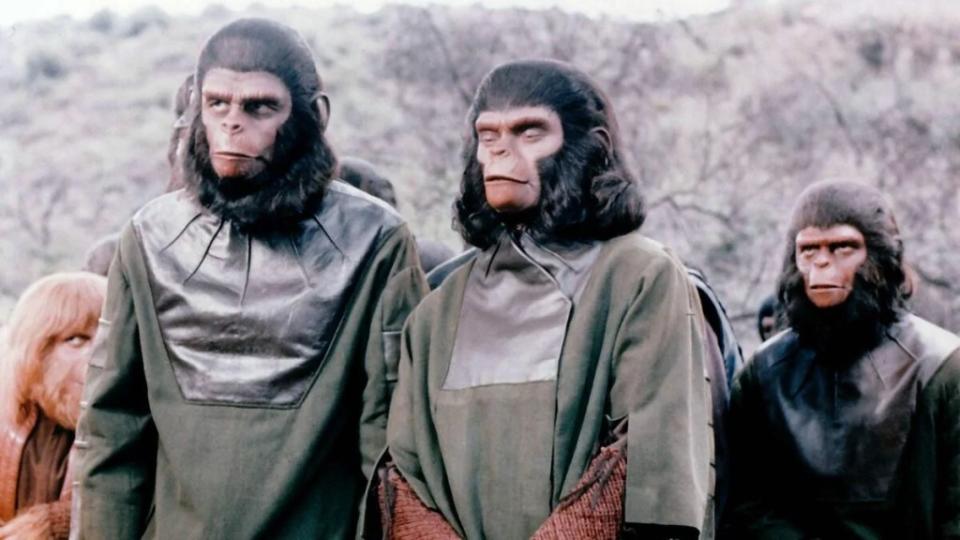
“Battle for the Planet of the Apes,” the final film in the original cycle of “Planet of the Apes” features (a short-lived live-action television series would follow the year after), was also the cheapest, with a budget of just $1.7 million. J. Lee Thompson, who made “The Guns of Navarone” but is perhaps best known for a string of low-budget Charles Bronson programmers, returned from “Conquest of the Planet of the Apes.” But even a journeyman filmmaker like Thompson bemoaned the thin budget and lack of script; he later claimed that the small sum truncated his vision for the movie.
In the movie Caesar (played by franchise stalwart Roddy McDowall) tries to maintain peace amongst apes and humans, who are scarred and mutated but still living within the cities. Of course, this doesn’t actually happen, with skirmishes constantly popping up. The correlations between the Planet of the Apes and our own world are easy to spot, with the uprisings connected to a number of societal movements, particularly at that time. (What, exactly, the metaphors are, remain a constant source of conversation.) And while the movie is ultimately disappointing, there are still some bright spots – the movie is told as a flashback, with John Huston as the Lawgiver in an even more futuristic Apes society doing the narrating; and the cast is genuinely wonderful, full of character actor greats like Claude Akins, Paul Williams, Austin Stoker and Paul Stevens. The extended cut, often included in home video releases, is even grimmer and more perverse. Seek it out.
8. “Conquest of the Planet of the Apes” (1972)
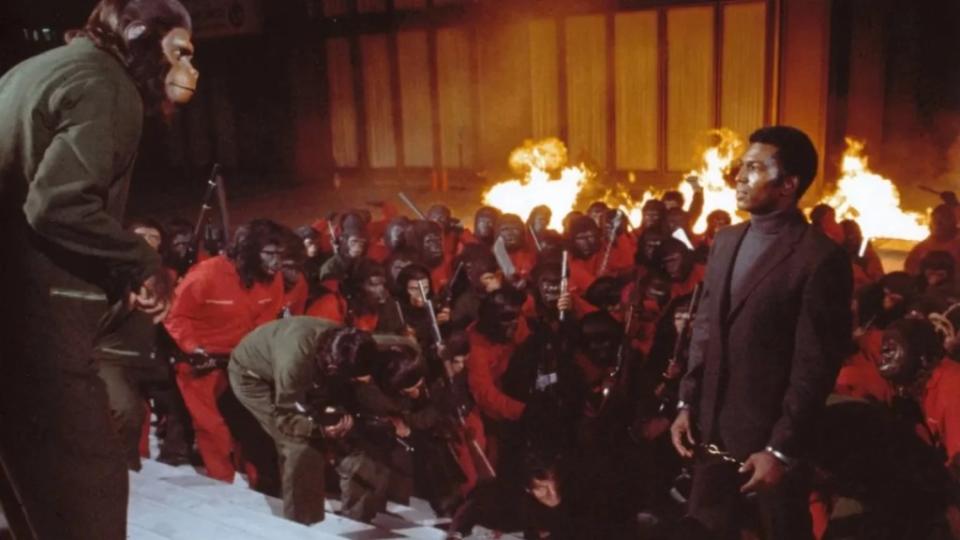
The first of the “Apes” films directed by journeyman filmmaker J. Lee Thompson is a direct sequel to “Escape from the Planet of the Apes,” with Ricardo Montalbán’s caring circus owner Armando having secreted away Caesar (Roddy McDowall), the son of Cornelius and Zira. The parallels between the Planet of the Apes and our own world are even more pronounced; the movie has a futuristic setting of 1991, with a virus having killed all dogs and cats in America, leading humanity to lean on apes as pets, before making them slave labor. (A character played by Hari Rhodes sympathizes with the apes plight.)
Caesar leads an unlikely rebellion against humanity, which Thompson dramatizes via a series of thrilling sequences photographed in the newly built Century City area of Los Angles, formerly home to the 20th Century Fox backlot. “Conquest of the Planet of the Apes” was also much darker in an original form, with an ending that featured the assassination of the human governor (played by Don Murray). Instead, they added a somewhat cheerier Caesar monologue that is awkwardly spliced in and very noticeable. This was also the first of the “Planet of the Apes” films to really suffer from a diminished budget. Just imagine what it could have been with just a little more money.
7. “Beneath the Planet of the Apes” (1970)
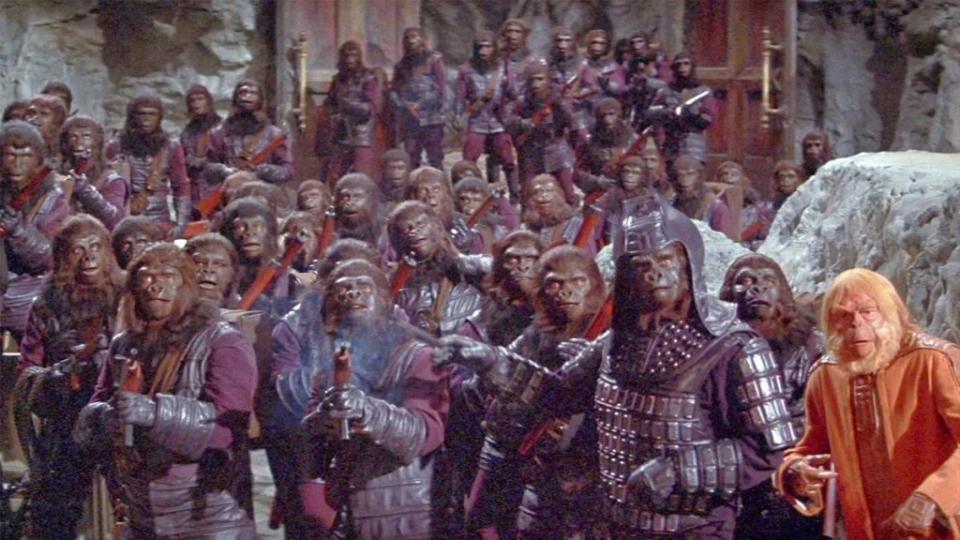
With the unimaginable success of the first “Planet of the Apes” movies, you could understand why 20th Century Fox wanted more movies – and why Charlton Heston was hesitant to return. Eventually, they got him to come back but in a much smaller role, showing up for the beginning and very end of the movie. This time around it’s a race to find Taylor, as several other human astronauts have shown up on the planet. Sure, there’s a lot of monkey business but all anybody remembers from this movie is the race of mutant humans who live underneath the earth’s surface and worship a giant nuclear missile.
“Beneath the Planet of the Apes,” directed by Ted Post, wanted desperately to maintain the eerie flavor of the first film and also its twist ending, so they saddled it with an even more bizarre climax where Taylor sets off a nuclear explosion that destroys the whole planet. (Spoiler alert.) What “Beneath the Planet of the Apes” lacks in cohesive storytelling and compelling characters (James Franciscus, you are no Charlton Heston) it more than makes up for in bizarre left-turns and extremely odd decisions. But it was still fun to be back. And the movie was a reasonable hit. So the question became: what now?
6. “Kingdom of the Planet of the Apes” (2024)
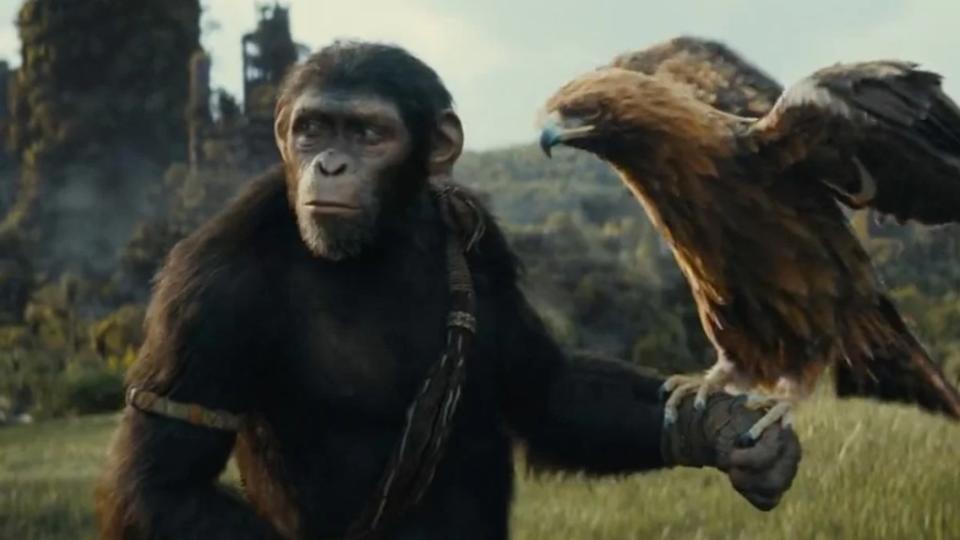
The latest “Planet of the Apes” installment takes place hundreds of years after the last entry, “War for the Planet of the Apes.” In this world, humans have mostly died off, after being infected with the same virus that made the apes super smart. We follow a young ape named Noa (Owen Teague) who teams with a smart human named Mae (Freya Allan) to rescue the surviving members of his tribe, who have been captured by the villainous Proximus Caesar (Kevin Durand). Proxmius claims to follow the teachings of the previous trilogy’s Caesar, but he does so in the most extreme and violent way possible. His ape society is perched outside an impenetrable vault, holding the last vestiges of humanity’s military might. But does Mae have an ulterior motive? Honestly, that’s not super clear.
The film’s last act, which involves them getting into the vault, is the movie’s most exciting. But it’s also the most muddled. Without a clear explanation of what Mae and Noa are after, it creates an emotional distance from the audience and the characters. This is a shame, especially considering the closeness we felt with Caesar in the previous films. It’s not enough to derail your excitement for the franchise (including the possibility of future chapters), but it is still a bummer. Long live the apes.
5. “Rise of the Planet of the Apes” (2011)
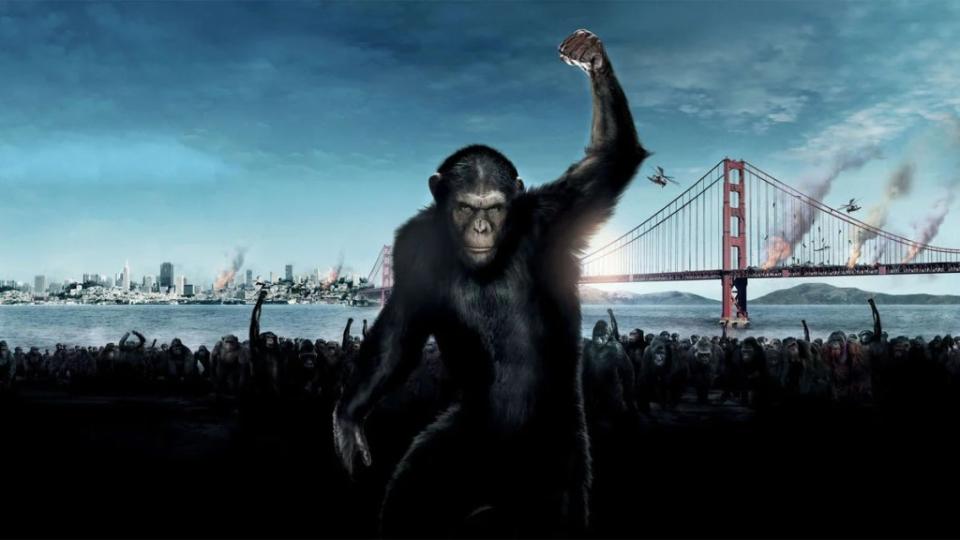
What a surprise. Ten years after the disastrous Tim Burton remake, 20th Century decided to reboot the franchise in earnest. The studio turned to British filmmaker Rupert Wyatt, who was coming off a buzzy Sundance feature, and writers Amanda Silver and Rick Jaffa, who imagined what the beginning of the ape revolution would probably be like. That puts the movie more squarely in the human world than any of the previous installments. It also puts its subtextual commentary firmly in the space of animal rights, which the series had never really addressed. This is a story about what humans do to animals. And what would happen to animals if they ever got wise.
James Franco and Freida Pinto are humans sympathetic to the cause, along with John Lithgow, as Franco’s ailing father. Brian Cox is an evil zoo keeper and Tom Felton is his equally villainous second in command. But Andy Serkis, as lead ape Caesar, gives the most astounding performance. This is such a satisfying watch; a “Planet of the Apes” movie reconfigured as a prison escape film. And it would kick off one of the bolder and more thoughtful franchises in recent memory. The sequels might have been better movies but this was the one that rejuvenated the franchise. Best recognize.
4. “Dawn of the Planet of the Apes” (2014)
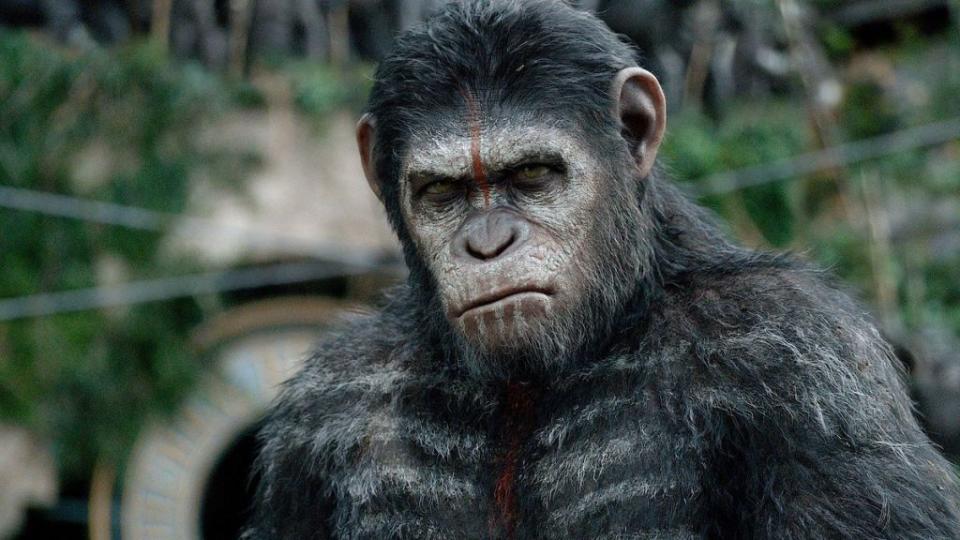
For the sequel to “Rise of the Planet of the Apes,” a new creative direction was led by incoming filmmaker Matt Reeves, who in turn brought along a trusted collaborator in composer Michael Giacchino. With “Dawn of the Planet of the Apes,” Reeves deepens the ape world and their tenuous connection to humanity. He also, crucially, gives us one of the most important ape characters in the entire franchise in Koba (Toby Kebbell), who was introduced in the first film and is fully fleshed out in this entry. Koba has been tormented by humans and is looking to stir up conflict between humans (led by Gary Oldman) and the apes.
The sequence where Koba infiltrates a human stronghold is one of the most gripping sequences in the series. (Him playing “dumb” is so good.) It’s clear from the opening frame of the movie (after a ballsy recap/montage), which pull out from a warpaint-smeared Caesar preparing to do battle in a rainy forest, that Reeves was not only taking the material seriously but that he was eager to push things even further than before. And Reeves was brought on fairly late in the process; imagine what he could do building a “Planet of the Apes” film from the ground up …
3. “War for the Planet of the Apes” (2017)
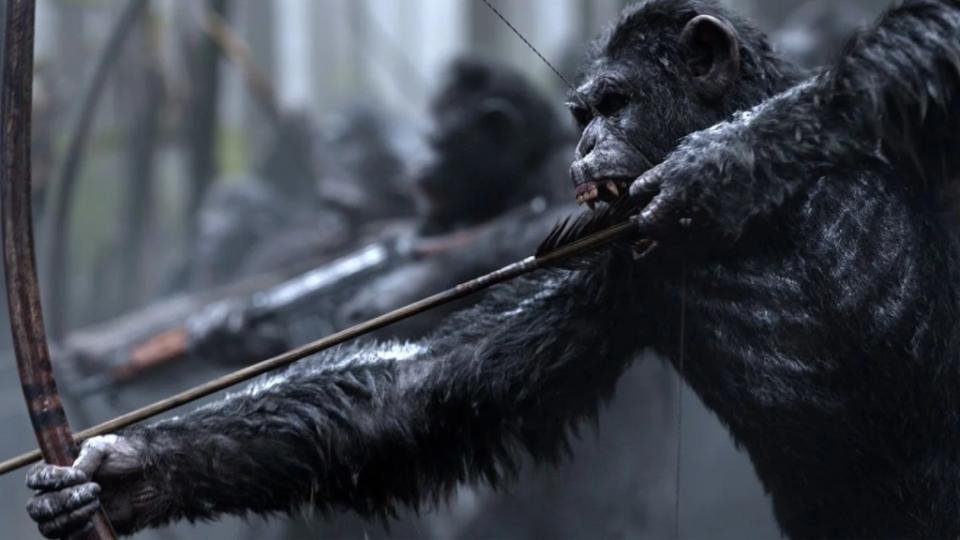
The third film from the most recent trilogy is also one of the best of the entire series. Matt Reeves, returning from “Dawn of the Planet of the Apes,” wanted to open up the scope of the films while also upping the emotional intimacy of the characters. Seems like a tall order. Especially for a franchise that has already traversed so much ground. How he accomplishes this feat is ingenious; he puts Caesar (a never better Andy Serkis) on the backfoot, hunted by a group of human soldiers known as Alpha Omega, led by a crazed General (Woody Harrelson). Even more ingeniously is that the humans, who call them “donkeys” (a nod to Mario’s frenemy Donkey Kong), have recruited some weak-minded apes to help them in their cause – to find and eradicate ape leadership and to enslave those who resist. After Caesar’s family is attacked and killed, he sets off on a journey to end the war once and for all. He wrestles with his goal’s potential for nastiness, envisioned by ghostly visitations by Koba, and along the way meets up with some new friends, including a young deaf girl they dub Nova (Amiah Miller) and Bad Ape (Steve Zahn), one of the most beautifully rendered, deeply sympathetic characters in the series.
Wrestling all of these disparate ideas, new concepts and fresh characters into a single, coherent narrative is something of a miracle. And everything coalesces in the movie’s final third, when Caesar visits the Alpha Omega encampment and the entire thing takes on almost biblical dimensions. Michael Giacchino should also be given special thanks for the best non-Jerry Goldsmith score in the series. Just listen to the “Planet of the Escapes” cue for exhibit A. This isn’t just the best “Planet of the Apes” film of the recent bunch; it’s one of the best studio blockbusters of the past decade. What an astounding, deeply moving accomplishment.
2. “Escape from the Planet of the Apes” (1971)
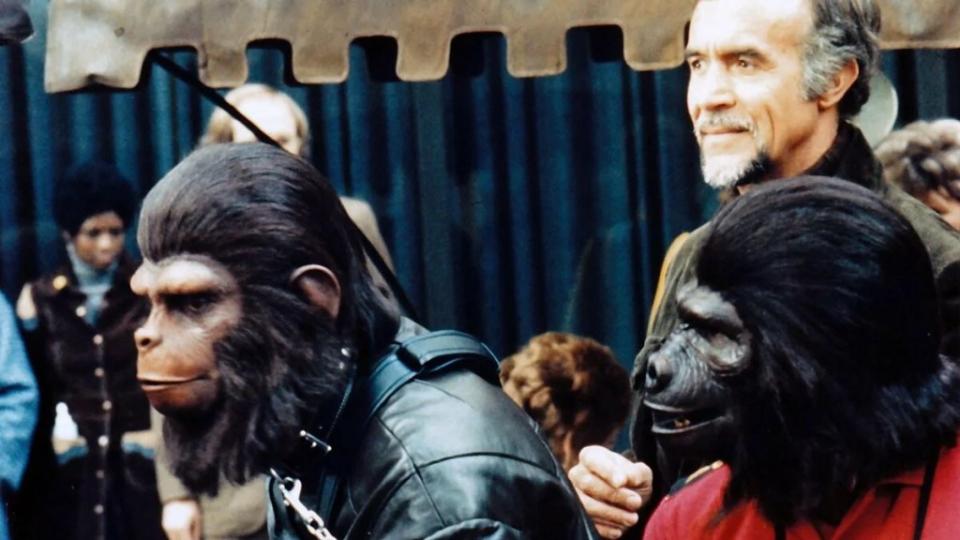
After the success of “Beneath the Planet of the Apes,” Fox executives demanded another sequel. But how? The entire earth had been blown up during that movie’s blustery climax. The solution was simple and extremely stupid: have some of the apes escape the planet before the world was destroyed, and have those same apes catapulted through time. Only this time, they wind up in our world. Not only does it solve the problem posed by the ending of “Beneath …,” but it also cannily reverses the fish-out-of-water dynamic of the original film by having the apes (played by Roddy McDowall, Kim Hunter and Sal Mineo) interacting with swinging 1960s Los Angeles. (Also think of the money they saved by only having three performers wear the prosthetics. This was the first movie where the budget was slashed significantly.)
What could have been silly as hell, is, occasionally, but charmingly so. But it is also quite touching, particularly in its bleak-as-hell finale, as the apes wonder why humanity is so unforgivingly cruel, when confronted with something that isn’t quite human. Sturdily directed by character-actor-turned-filmmaker Don Taylor, with a sharp, knowing script by Paul Dehn (with uncredited work by original novelist Pierre Boulle), “Escape from the Planet of the Apes” has rightly become a favorite of the franchise. Of particular note is the groovy, gently psychedelic score by composer Jerry Goldsmith, returning for the first (and last) time to the series. If, for some reason, the inherent silliness of “Escape from the Planet of the Apes” has kept you from watching it, well, time to correct that mistake. It’s just as socially conscious, deeply funny and strange as any of the other installments, with a vibe all its own. Long live “Escape from the Planet of the Apes.”
1. “Planet of the Apes” (1968)
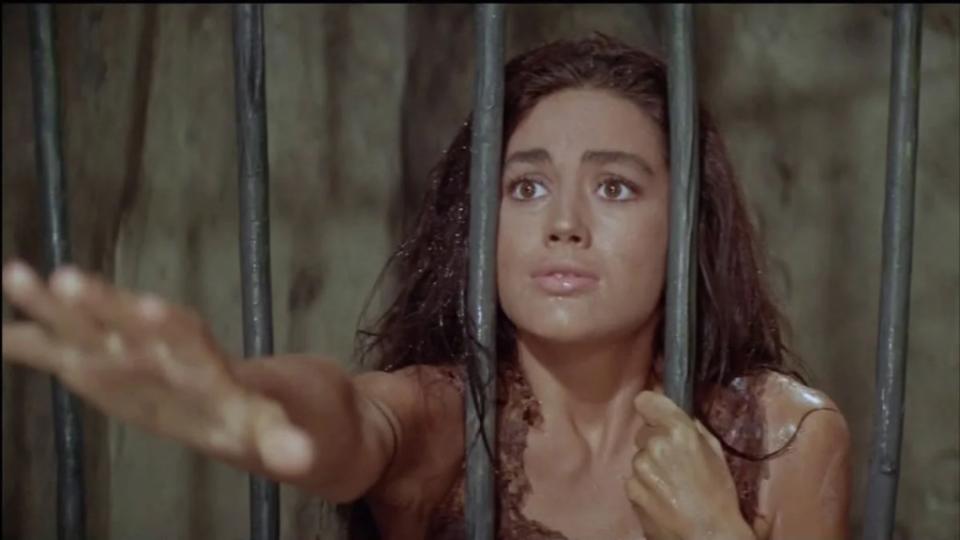
The film that started it all is still the best. “Planet of the Apes” was adapted from a novel by French author Pierre Boulle, first by “The Twilight Zone” creator Rod Serling, whose version was deemed too expensive, and later by Michael Wilson, a blacklisted screenwriter who co-wrote “Lawrence of Arabia.” (The famous twist ending was written by Serling and retained by Wilson.) Frankly J. Schaffner, director of “Patton,” was enlisted to bring the story of an astronaut (Charlton Heston) whose space voyage ends with him being marooned on the titular planet, to life. Flanking him on this endeavor was John Chambers, a legendary make-up artist who John Goodman played in “Argo,” tasked with generating an entire ape society, full of orangutans, chimpanzees and gorillas. (Chambers was rewarded with an honorary Academy Award for his groundbreaking efforts.)
Even if “Planet of the Apes” was pure spectacle, it would probably be remembered as one of the great science fiction stories of all time. But the movie’s sly cultural commentary is what really secured itself in the pantheon. The movie was released in 1968, when America was at its most combustible, and what the movie has to say about villainizing the “other,” whether it’s a different race or a different ethnicity, plus the timely nods to nuclear proliferation and the police state, add further dimension. (The next “Apes” movie should have a person of color be the main human character; incredibly this has never happened before.)
The scale and scope of the influence of “Planet of the Apes” is far reaching – from the stage musical brought to life by a particularly memorable episode of “The Simpsons” (“A Fish Called Selma”) to the twist ending, which has been repeatedly replicated by the work of M. Night Shyamalan and whose iconography has been borrowed for everything from the “Escape from New York” poster to “Cloverfield,” a movie directed by future “Planet of the Apes” filmmaker Matt Reeves. Even if you’ve never seen “Planet of the Apes,” you probably know specific moments from the movie and even lines of dialogue. That is how pervasively the movie has permeated pop culture.
The post Every ‘Planet of the Apes’ Movie, Ranked appeared first on TheWrap.

